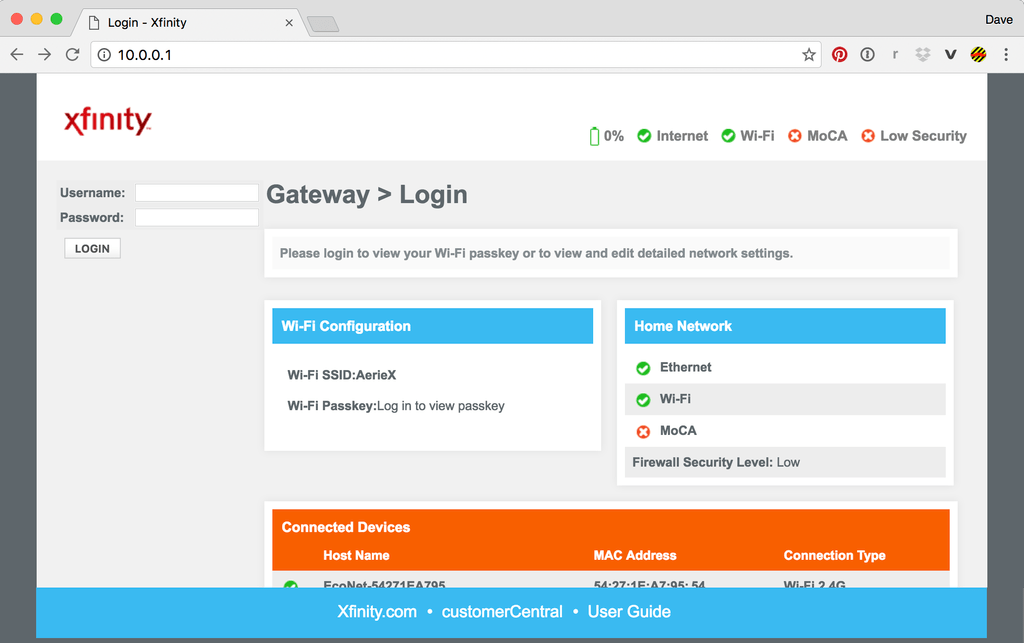An IP address is called as Internet Protocol address.
10.0.0.1 IP address is a special class of address to be used only for private network. It is used for logging in and getting connected to a server.
It is a private IP address assigned to one particular client-side device or a network based hardware that serves for its default address. 10.0.0.1 IP is a IPV4 address used by big business computer based network systems.
There are many different types of IP address like 192.168.1.1 and even 192.168.0.1 and 10.0.0.0.1 serve different purposes.
If you have just bought a new router and are trying to access it from your home computer then you will have to use 10.0.0.1 to access the control panel settings of the router. With the help of a control panel and by going to the 10.0.0.1 login address, you can fix and adjust the network and router settings as per your ease.
If the device over which you are working, also called the client device is using the IP address of the range 10.0.0.1 then all the other device which are connected to the same router will be assigned a similar range of IP address, where 1 at the end is replaced by next numbers such as PC is assigned 10.0.0.x so the other device like your smartphone will be assigned the IP address 10.0.0.2 and so on.
Since 10.0.0.1 is the default way to access the router settings, it is also called as the gateway address as it also is the local side of the router. It is a class A address which has 255.0.0.0 as the default subnet mask.
How do I setup my router with 10.0.0.1?

When using a router, all the management and control of that particular router is done via a platform that can be accessed when we visit the address 10.0.0.1 (default gateway). It is often called as the management Internet protocol address. When a user wishes to make any changes to the router settings, the configuration can be adjusted using this IP address. You just have to open your web browser like chrome or safari and enter the address in the address bar.
This IP address is used for things like
- Setting your router?s proxy settings
- Setting up the DNS also called Domain Name Server
- Setting the DHCP Client: Dynamic Host Configuration Protocol
- It also gives user the access to change wireless function settings
- Users can also get to access the MAC address.
Steps required to Setup the router with the help of 10.0.0.1
To access and see the router settings, follow the below steps
- Open any web browser and enter https://10.0.0.1 (You can simply copy this and paste in your browser) in the address bar.
- Press enter and you will be greeted with a control page that shows various settings of your router.
The whole console has variety of functions and before accessing it, you will be required to enter username and password which is given on the box
You can just go through the various functions and settings that give you access to control and make changes as per your needs. Head to the network tab and you can setup the network with many different methods such as Dial-Up connection or DSL method. You have to enter 10.0.0.1 admin username and password to change and setup the DNS. (By default the DNS is 8.8.8.8 and 8.8.4.4 given by Google)
Last step is to ensure safety of your router. If your router has the feature to select the type of wireless function then select WPA or WPE as it ensures your router is safe.
What are my router?s default username and password?

One of the biggest problems that users face is forgetting the username and password for accessing their router settings. In case you forget or have misplaced your credentials, you can see for it on the router as most of the time it is mentioned over the box. If you don?t find anything, try to look for some information in the setup manual that comes in the box. You can also manually search for the credentials on Google. In most cases, the username is either admin or user while the password is 1234 or 0000.
We have curated a list of the most widely used username and password that routers use by default. Find your router name and get rolling. If there?s nothing, do a manual search or let us know in comments.
10.0.0.1 Password and Admin Username of all Routers
To see the admin login and password of your router then click here
What is the Admin Tool used for?
The admin tool is used to take control of the router that ensures your systems and various devices are connected for seamless internet connection. It can help you do things like:
- Change the router settings like WiFi network name also called SSID
- Get to know your MAC address and change the password or network key
- Change the username and password
- Access and change the network settings like firewall and Open/closed port
- Set safety standards for your router and also parental control
How to Find Out if Your Router Uses the 10.0.0.1 login Address?
For Windows:
- Click the search icon and enter ?cmd?.
- Click Command Prompt.
- In the Command Prompt window, enter ?ipconfig/all? then press the [Enter] key.
- Look for your router?s local IP Address by checking the Default Gateway section.
For MAC OS:
- Click the Apple icon then select the System Preferences? option.
- Click the Network icon under Internet & Wireless. The Mac computer?s IP Address, Subnet Mask and the router?s IP Address will then be displayed in the Network window.
Users face a lot of issues when accessing the IP address 10.0 0.1, like IP address not working or not loading. Administrators can encounter several issues like below:
- 10.0.0.1 refused to connect: Users often are not able to connect to the 10.0.0.1 IP address and the simplest reason behind this could be that there exists no device which uses this IP address. Since there is no device which uses this IP address, you won?t be able to connect to http://10.0.0.1. You can use the command prompt CMD on windows and see if any device in your network can use 10.0.0.1, you should be using the ping command ping 10.0.0.1. To get a positive result, there should be a device active in your local network to get the ping.
- 10.0.0.1 took too long to respond: There are often problems with the router itself due to prolonged usage and frequent power failures. In such case, you need to check your hardware as the problem can be from both the ends. The router as well as the system where you are accessing 10.0.0.1
- Incorrect client address: You need to understand when you already have DHCP set up on the network then there should be no other device which has already been using 10.0.0.1 as their static IP address because this will lead to a conflict of IP address causing network issues
- Incorrect Device address: This is the most basic mistake, often times a small misplacement of 0 or 1 in the IP address can cause issues and if it goes unnoticed then 10.0.0.1 wont load.
Originally published at 10?0?0?0?1.org on March 2, 2018.
![10 How to Login 10.0.0.1 IP Address (Default Gateway) with [FAQs]](https://911weknow.com/wp-content/uploads/2020/09/10-how-to-login-10-0-0-1-ip-address-default-gateway-with-faqs-628x275.png)

